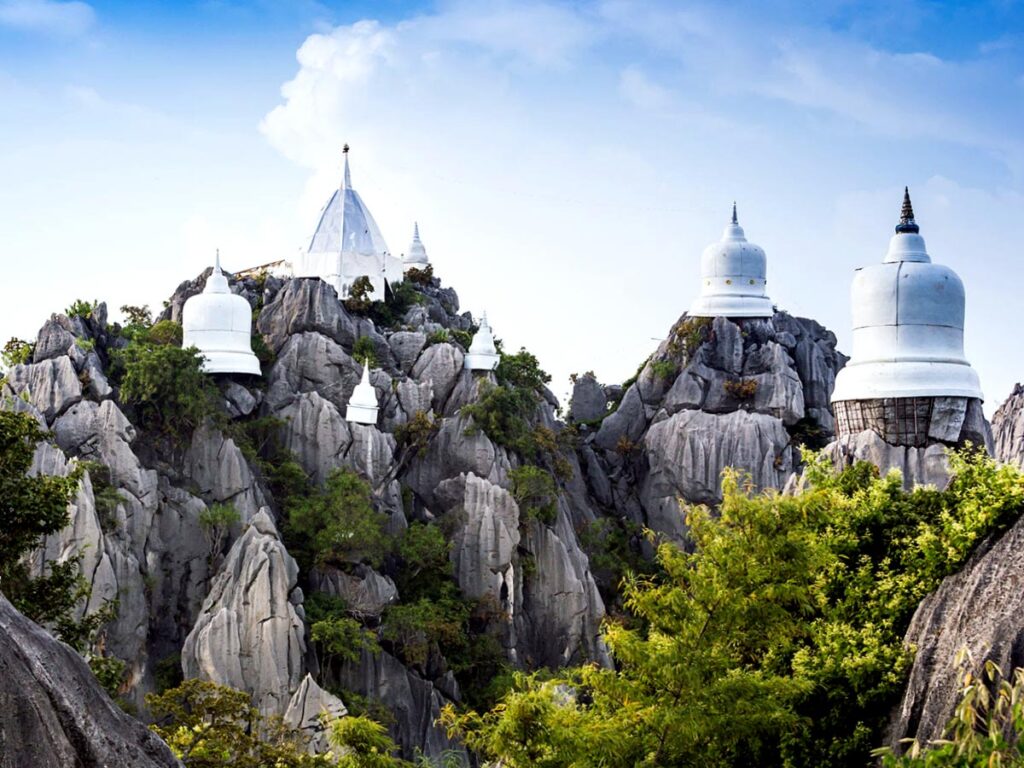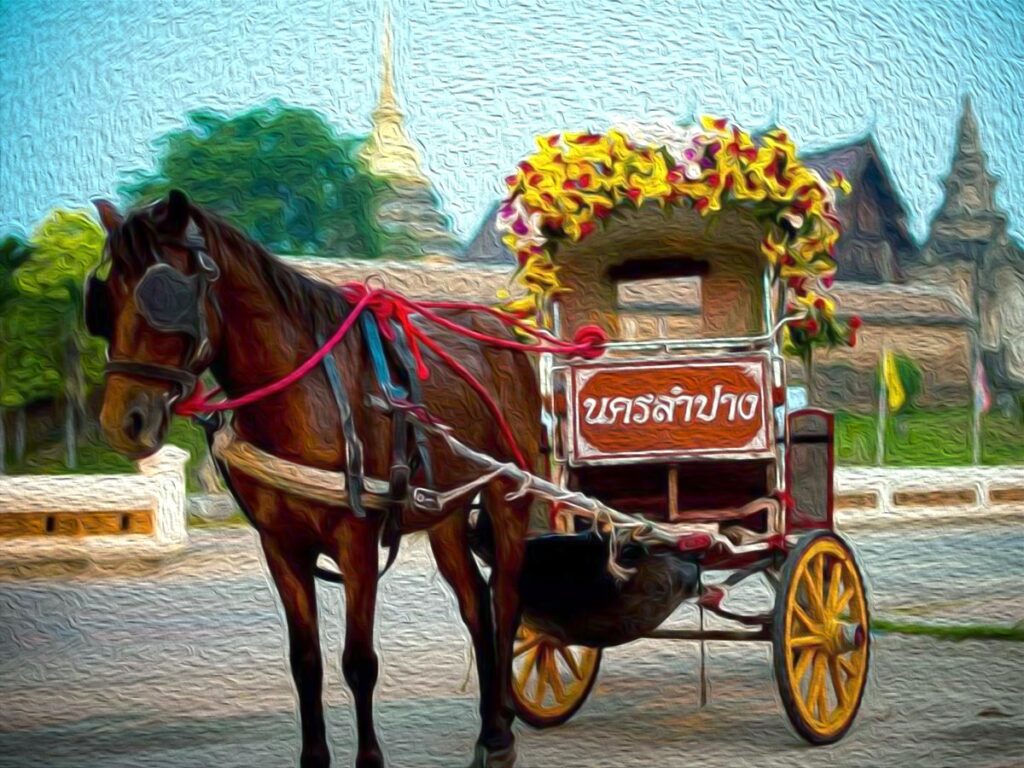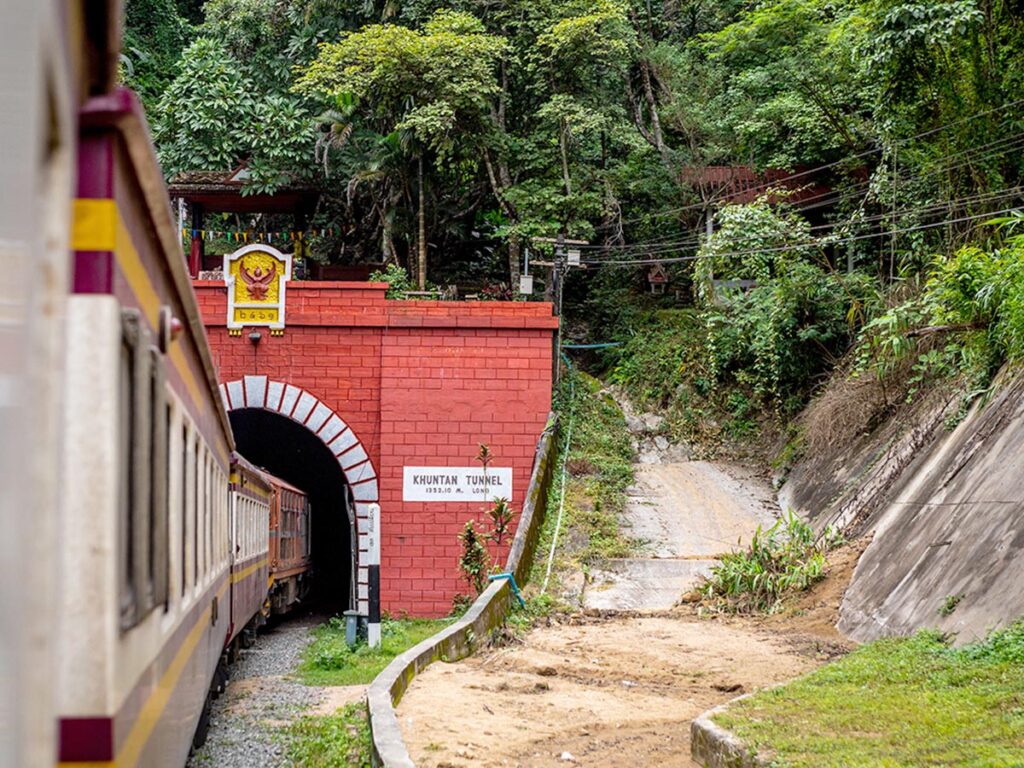
Short Lampang History
Around 90 kilometers south of Chiang Mai is the significant city of Lampang. Around the ninth century, under the reign of Queen Chamathewi, a village known as Wiang Khelang was established in the region of Lampang. As a result, the city existed before Chiang Mai. About Lampang’s early history, nothing is known. The name of the city changed over time, going from Nakhon to Lakhon and then to Lampang. Before King Mengrai seized control of it, it was a sovereign state. Between 1296 and 1355, Lan Na, which included Chiang Mai, Chiang Rai, Lamphun, and Lampang, was founded by King Mengrai, who is credited with founding Chiang Mai, and his successors.
The Lanna Kingdom’s Golden Age
According to historians, the Lanna kingdom experienced its Golden Age between the years 1355 and 1558. During that time, temples including Wat Suan Dok, Wat Chet Yot, and Wat Chedi Luang were built. In addition to capturing Nan and Phrae, the Lan Na kings also attacked Sukhotai in Ayuthaya. They took control of remote locations like Muang Yong and other towns in Shan State, as well as Chiang Rung (now Jinghong in Yunnan province, China) (now in Myanmar). Khelang (Lampang) was a component of the Lanna Kingdom during the time.
Occupation of Burma
War has been waged nonstop, weakening Lan Na. The Burmese occupation began with the conquest of Chiang Mai in 1558 by Burmese forces. This time frame included the years 1558 through 1774. About this time period, little is known. The Lan Na Kingdom had periods of partial autonomy. When Burmese was the ruling nation, the monarch occasionally came from the Mengrai dynasty. Lampang proclaimed its independence in 1614. The Burmese occupation was the target of several uprisings throughout this tumultuous time.
Bringing Back the Lanna Kingdom
With the aid of Taksin, the monarch of a Siamese kingdom with its capital in Thonburi, a local noble by the name of Kawila was able to drive the Burmese out of Chiang Mai in 1774. As the first ruler of the Chet Ton dynasty, Kawila kicked off the restoration of the Lanna Kingdom. Lanna had already been Siam’s vassal. The kingdom had collapsed. Academician Kraisri Nimmanhaeminda of Chiang Mai summed up Kawila’s reconstruction strategy as “Put people in towns, put produce in baskets.”
ACTIVITIES IN LAMPANG
Make a trip on a horse cart to Lampang

The city of horse carts is Lampang. It is the only city in Thailand where there are still a sizable number of horse-drawn carriages. They were first used in the city more than a century ago, when there were sizable populations of Burmese and Shan residents. Consequently, riding in a horse-drawn cart is one among the things to do in Lampang. It is enjoyable. A brief horse-cart excursion is a common feature of Lampang tours. Between 90 and 100 horse carts are now in use in Lampang. They receive assistance from the Siam Cement Company and the neighborhood Rotary Club.
Bridge Rachadapisek
The Wang River is crossed by the ancient Rachadapisek Bridge. The bridge was spared from demolition during World War Two thanks to an American missionary teacher by the name of Lucy Starling. The story may be found here. It’s a little bridge. This bridge is beautifully lit up at night.
Railway Station in Lampang
One of Thailand’s most stunning train stations is the one in Lampang. In 1916, the city was connected to the railway from Bangkok. From Chiang Mai to Lampang, the train trip is incredibly picturesque. Take the day train to enjoy the trip via Doi Khuntan National Park and the Khuntan Tunnel. It is a third-class train without air conditioning that enables you to enjoy the wind, the countryside, and the historic railroad stops.
Ceramics museum in Dhanabadee
Visit the Dhanabadee Ceramic Museum while in Lampang. The “Chicken Bowl” trademark and the history of the Dhanabadee Ceramic firm are both chronicled in the museum part. On exhibit are two gigantic original dragon kilns. You may also see the entire process of making the chicken dish. They run classes and sell some very lovely mementos. One of our favorite places to visit in Lampang is the Dhanabadee Ceramic Museum. It is included in our day trip from Lampang.
National Museum of Lampang
The history of Lampang is the subject of the museum’s major display. This show, which was just just launched by the museum, is interesting to view. The English explanations are clear and extremely engaging. It is a wonderful introduction to Lampang for people who have never visited there and just takes an hour of your time. I thought the section on the many languages and dialects spoken in the province of Lampang to be quite fascinating. You can skip three movies of horse-drawn carriage journeys. Do a horse-drawn carriage trip in person instead.
Museum Phum Lakon
The clock tower roundabout is not far from the Phum Lakon Museum, also known as the Bhumi Lakon Museum. It might seem a bit much to visit two museums that are devoted to Lampang’s history, but the Phumi Lakon Museum is very different from the Lampang National Museum. It provides further details regarding the development of the teak industry. Many antique photographs from those times are on exhibit. The museum also narrates the tale of Lampang’s curse. Some people think Chiang Mai defeated Lampang in the battle to become the political and economic hub of North Thailand because of this curse.
Walking Streets in Lampang
The city offers “walking streets,” early-evening street marketplaces with local goods for sale, just as many modern cities and towns. There are two on Saturday and Sunday at Kad Kong Ta and one on Friday at Wang Nua Street (Cultural Street). Among the items for sale are mementos, handicrafts, delicacies, and regional cuisine. The majority of these street markets also feature regional music and foot treatments. Highly suggested. Amazing Walking Streets like these exist. These marketplaces often begin at or near dusk and last until 22:00.
Market at Kao Chao
The Kao Chao Market is perhaps Lampang’s oldest market. It is almost near to the 1916-opened railroad station. Before 0500 in the morning, the market opens, and it closes about 1100. We adore these marketplaces for fresh produce, especially if they are historically significant like the Kao Chao Market.
The Lampang Horse Cart Society
All of our trips include a stop to the Horse Cart Society of Lampang since it is such a unique and fascinating location. Here, a few of determined individuals maintain the renowned Lampang horse carts. This most unique facility also has a number of carts and several odd cars. They have a bicycle that is quite tough to ride and a “pulled rickshaw.” Just take a spin in one of the cars. It is quite enjoyable.
Things to do in the Province of Lampang
Of Thailand’s 76 provinces, Lampang is the tenth largest in terms of size. More over 300 kilometers separate the southernmost and northernmost points. Things to Do in Nakhon Lampang or Lampang City and the Province of Lampang are divided into various sections.
Wakahom Phra Kiat
Wat Chaloem Phra Kiat Phrachomklao Rachanusorn is the full name of the temple. It is in the Chae Hom neighborhood. It will take a whole day to get from either Chiang Mai or Lampang. It appears that there has been a temple on this mountain for a very long time, although Wat Chaloem Phra Kiat was just recently made into a tourist destination.
You will need to change into a pickup truck to go to the temple after reaching the mountain’s base. About 3,5 kilometres of the journey include inclines. You will be dropped off at a location from where you must go on foot to reach the many views and chedis perched on rocky ledges. The vistas are really breathtaking.
Thai Elephant Conservation Center’s hospital

Twenty kilometers north of the city is where you’ll find the Thai Elephant Conservation Center. It is Thailand’s only elephant camp that is administered by the government. This camp enables elephant riding and hosts an elephant show, both of which we find to be uninteresting. Elephant riding and performances are not something we provide.
Despite having a distinct entrance from the Center, the hospital is where we go. All elephants receiving care at the hospital are treated for free. Mothers and their young children can be found in the nursery.
Doi Khun Tan National Park hiking
Chiang Mai and Lampang are around midway between each other and Doi Khun Tan National Park. One of Thailand’s first national parks, it is also the only one with a railway that passes through it. Doi Khun Tan is the tallest mountain at 1373 meters. The hiking in the park is fantastic. Its tourist center has historical images of the tunnel’s construction and provides useful information. The national park has excellent lodging options, and Payap University in Chiang Mai also oversees several ancient missionary bungalows. Doi Khuntan has some amazing vistas.
Take the train

One of the best things to do in Lampang, if you have the time, is this. Take the leisurely day train without air conditioning that travels through Doi Khuntan National Park. The railway hasn’t altered much since it was built roughly 100 years ago. At no point will the train exceed a speed of 50 km/h. There will be plenty of time to take in the surroundings and the minor historical sites as you travel. This train journey comes highly recommended. You’ll pass the well-known White Bridge and ride through Thailand’s longest railway tunnel, the Khuntan Tunnel. Travel by classic railroad with us!
The Friends of the Asian Elephant Foundation Hospital
The Hospital of the Friends of the Asian Elephant Foundation is located right adjacent to the Thai Elephant Conservation Center. Motala and Mosha, two elephants who each lost a limb after stepping on a landmine, are the two most well-known locals. They both have artificial legs. The BBC documentary series “Great Asian Railway Journeys” included this facility. A must-see location is the hospital of the Friends of the Asian Elephant Foundation.